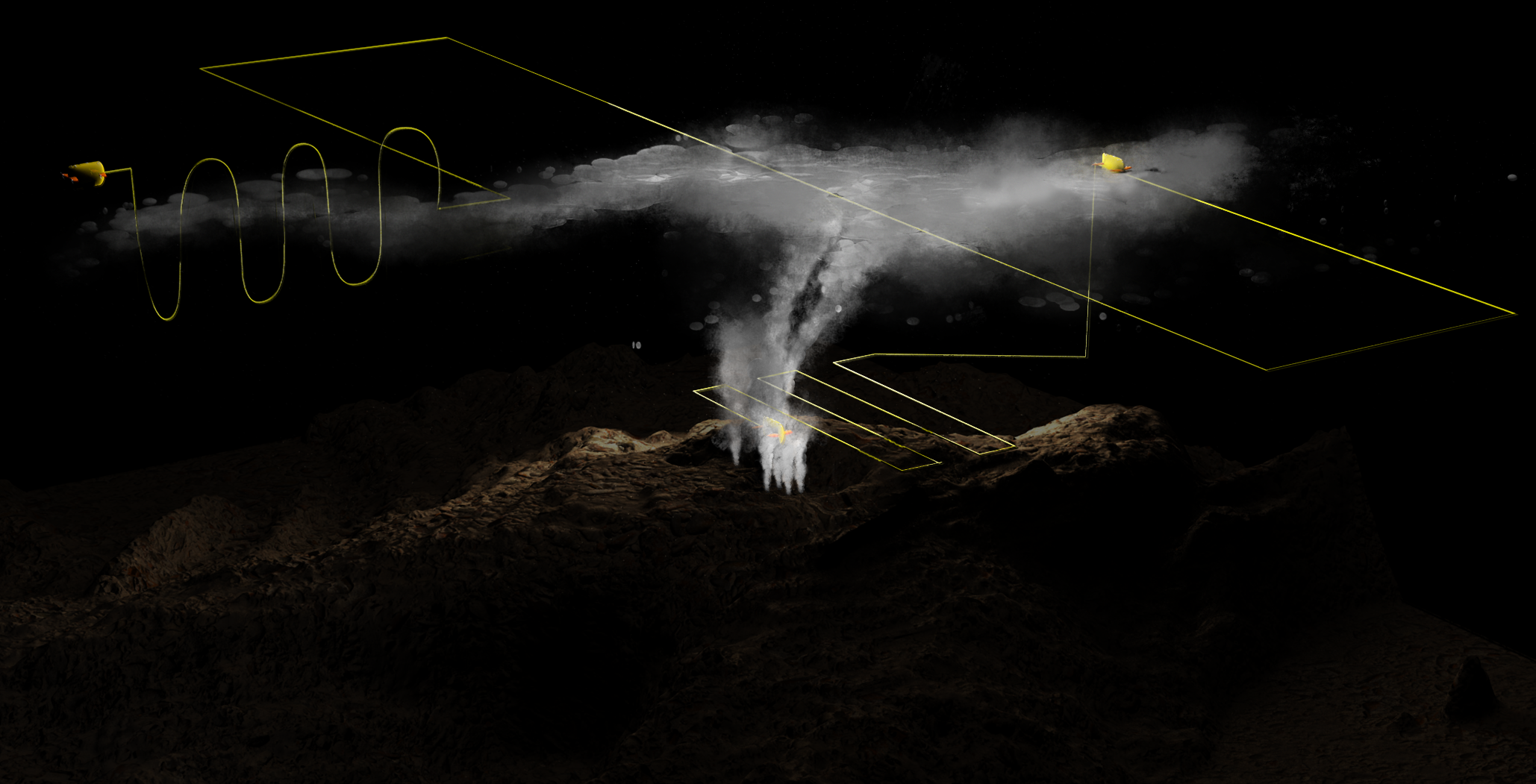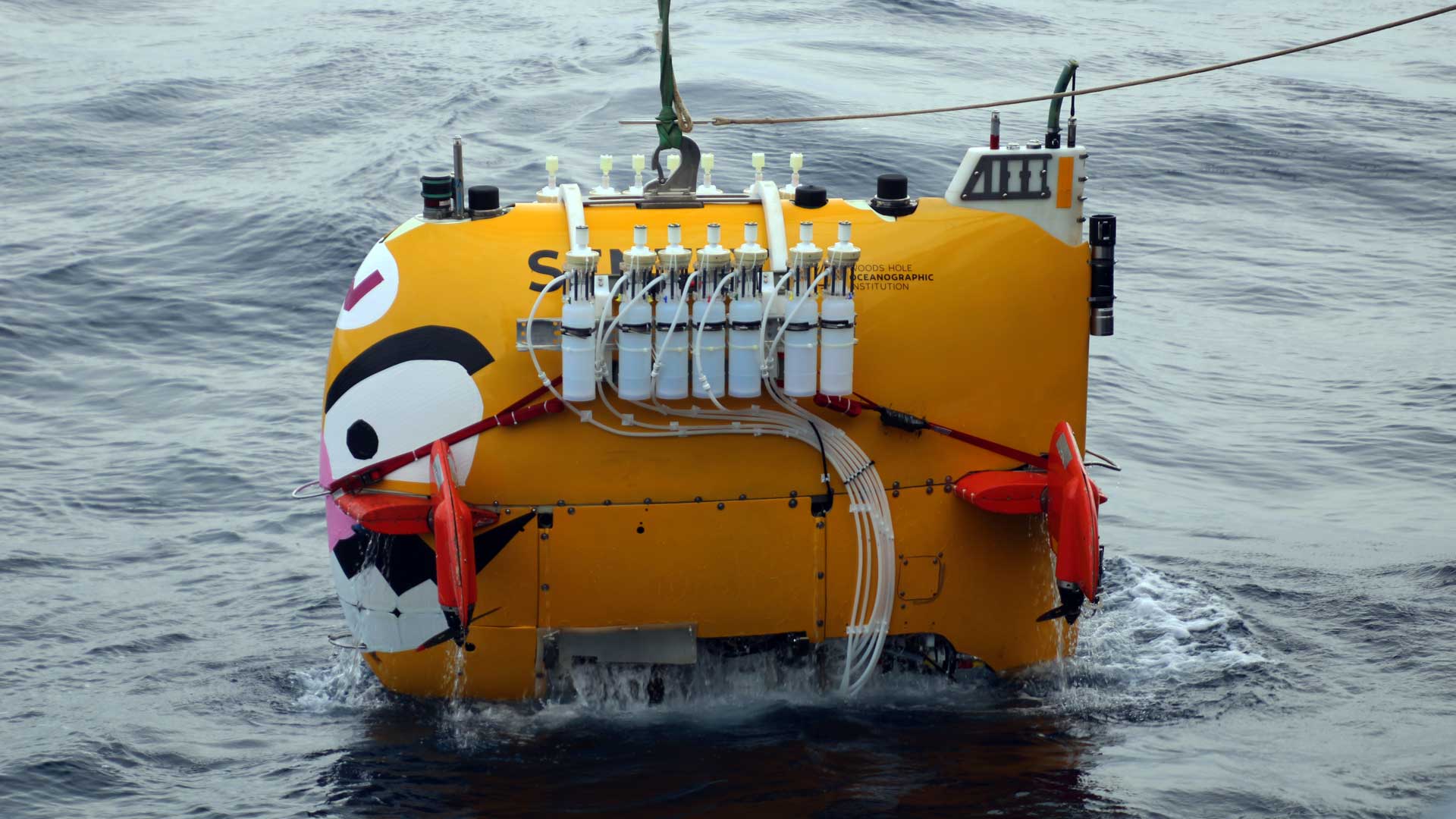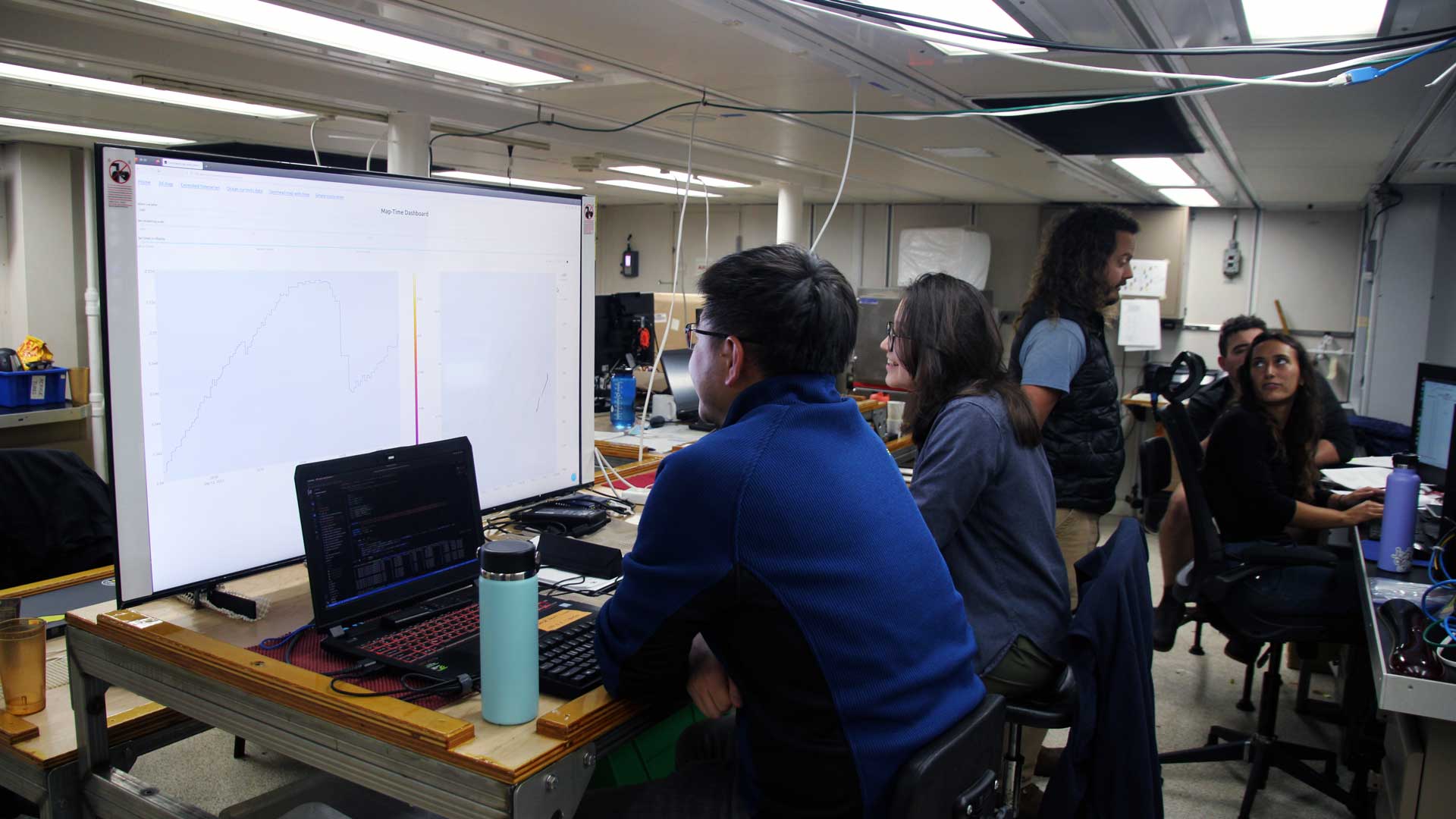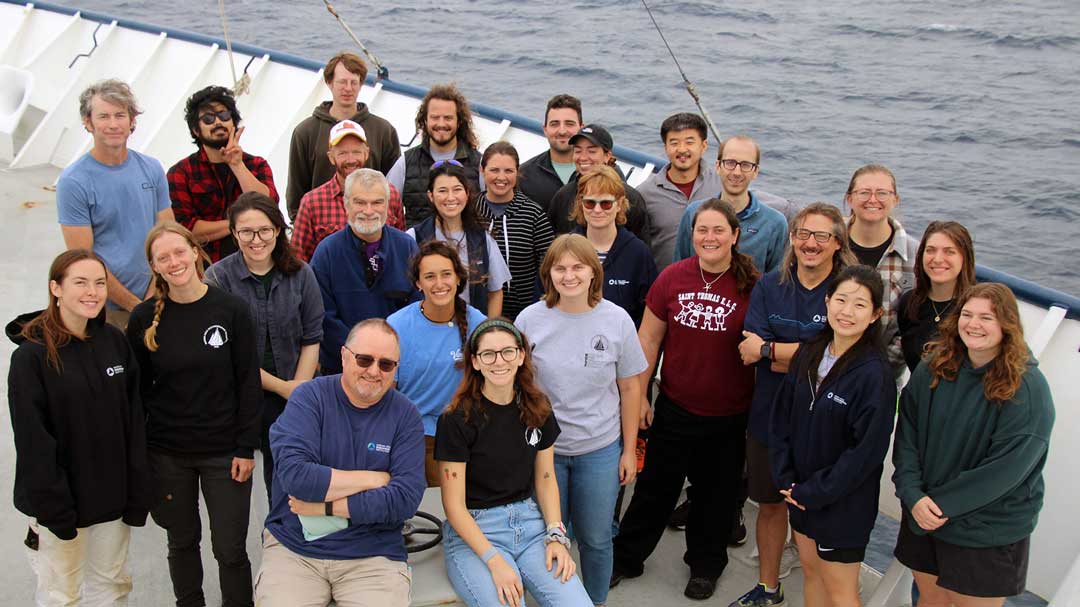How to catch a plume
Sampling hydrothermal iron with adaptive AUV Sentry dives

In a laboratory aboard research vessel Atlantis, Chris German watched as data came in from autonomous underwater vehicle Sentry, looking for indications that the vehicle was passing through a plume of fluid released from a hydrothermal vent.
German, chief scientist and a geochemist at Woods Hole Oceanographic Institution (WHOI), wasn’t alone in the lab. He was working with a research team that included people who can model the movement of fluids in the deep sea, computer programmers helping visualize where the vehicle is and what its sensors are picking up, and the engineers who operate Sentry for the National Deep Submergence Facility. Together, they watched the dive information displayed on a wide screen and a fleet of laptops. It was August 2023, and this was a National Science Foundation-funded expedition to the Juan de Fuca Ridge, a hydrothermally active area off the coast of Vancouver, Canada.
They were sampling for hydrothermal iron—which comes out of vents with concentrations 1 million times higher than in normal ocean water making it a major source of a micronutrient that is essential for life.
To obtain these samples, the team was running unusual and uniquely challenging missions with Sentry, which included making real-time course modifications, remotely triggering sample collection from a brand-new version of the Suspended Particulate Rosette Sampler (SUPR), and flying the vehicle in midwater at a constant depth, rather than its more typical mode of navigating at known altitudes near the seafloor. It was also novel for autonomous vehicle operations to have the science party and vehicle team working so closely together in the same lab while Sentry was underwater.
The expedition led to a wealth of samples containing hydrothermal iron and other trace elements, exactly what German and his geochemistry colleagues were after.

A missing 90%
In the last decade scientists have discovered the iron that comes out of hydrothermal vents and seamounts nourishes the global ocean, making its way to the surface thousands of kilometers away. But the iron that reaches the surface makes up just 10% of what comes out of hydrothermal vents. The other 90% goes missing within the first 100 kilometers away from the source—if not closer.
At a time when the scientific community is studying how iron helps the ocean draw carbon dioxide out of the atmosphere, scientists like German want to know what allows that 10% to escape the seafloor—and below—and fertilize the ocean. He also wants to know where the other 90% goes. Understanding the journey of this iron to the ocean surface on Earth could also help scientists recognize indicators of habitability—or even life itself—in the oceans of other planets.

Plume forecasting
To get a handle on this problem, German and his collaborators needed samples and data that would allow them to build a three-dimensional model of what happens to the plume of materials released from a hydrothermal vent within the first 10 to 100 kilometers of its origin, something no one had done before.
The science team used a predictive model, developed by Guangyu Xu, from the University of Washington’s Applied Physics Laboratory, to anticipate where the plume was going to go. This model drew from continuous, real-time data collected at the Juan de Fuca Ridge at an underwater observatory run by Ocean Networks Canada, as well as other ocean circulation models.
“Guangyu basically generated something like the Weather Channel app’s radar for rainfall prediction,” German said. “It provided us with daily updates showing us where the hydrothermal plume should be going every four hours into the future.”
Visualizing a dive
Once a dive was underway, the scientists needed to know if they were on the right track. Communication between Sentry and the ship is minimal. It acoustically transmits short text messages that communicate vehicle status and some of the sensor data.
That’s where a computer program, developed by Victoria Preston, came into play. Preston is presently a postdoc at Northeastern University, but she first started working on this program as a student in the MIT-WHOI Joint Program in Oceanography with Anna Michel, WHOI’s chief scientist for deep submergence, and has used it on Sentry missions in the past.
Preston’s program takes the data that comes back from Sentry and places it on a map. It also plots the sensor data measuring things like methane, reduction in oxidation, particle size, and temperature, so scientists can see if they are closing in on water samples with the chemical properties they are trying to find.
“My research background is thinking about adaptive robotic systems and forward path planning,” Preston said. “I want to give scientists situational awareness while a vehicle is underway and give them information they can act on.”
The ability to anticipate where the plume would go and to determine if Sentry was on the right track combined with the Sentry Team’s flexibility in how they ran the dives, resulted in gallons of water samples to start building the three-dimensional model of what happens to all the iron in hydrothermal plumes.

Deep collaboration
“This expedition worked so well because of the level of collaboration between the science party and the Sentry Team,” said Matt Silvia, the Sentry expedition leader on the cruise. “The scientists requested a non-standard way of operating Sentry during cruise planning, but all their requests fell within the constraints of what the vehicle can do.”
“Sentry can do missions like this because of the foresight of the people who designed it,” Silvia added. “It’s a hydrostatically stable platform, it has a lot of payload flexibility, and the number of ways people can use it have only increased with its successful track record.”
On the science side, German could not be more pleased with the results of the expedition. “The Sentry Team went above and beyond what the vehicle is advertised to do,” he said. “Victoria was updating her program daily, watching how we were using it and then making it better. She was leading a bunch of hackers, with an incredible intellectual group.”
“Sentry has provided rock-solid reliability within the National Deep Submergence Facility for more than a decade,” German added. “It’s rewarding to see that science users haven’t yet tapped into the full capabilities of this extraordinarily versatile vehicle. There is a lot more still to come.”
-Hannah Piecuch
